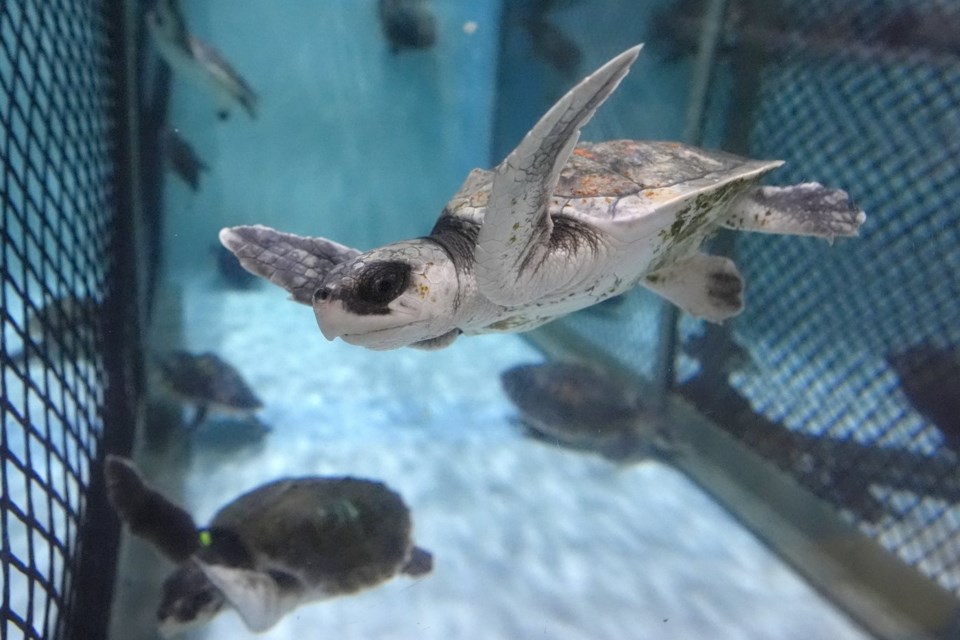QUINCY, Mass. (AP) — As global warming fills the plankton-rich with death traps for sea turtles, the number of stranded reptiles has multiplied over the last 20 years, filling one specialized animal hospital with the endangered creatures.
The animals enter areas such as Cape Cod Bay when it is warm, and when temperatures inevitably drop, they can’t escape the hooked peninsula to head south, said Adam Kennedy, the director of rescue and rehabilitation at the New England Aquarium, which runs a turtle hospital in Quincy, Massachusetts.
More than 200 cold-stunned young turtles were being treated there Tuesday, Kennedy said.
“Climate change certainly is allowing those numbers of turtles to get in where normally the numbers weren’t very high years ago,” he said.
, sometimes near death, wash up on Cape Cod every fall and winter. The aquarium expects the number of turtles it rescues to climb to at least 400, Kennedy said. In 2010, the average was 40, he said.
High wind speeds and falling temperatures have fueled recent strandings, he said.
The total five-year average of cold-stunned sea turtles in Massachusetts was around 200 in the early 2010s, according to National Oceanic and Atmospheric Administration data, growing to more than 700 in recent years.
All the turtles at New England Aquarium's hospital are juveniles, mostly critically endangered Kemp’s ridley turtles whose migratory patterns lead to strandings here. They were being treated for maladies ranging from pneumonia to sepsis.
The Kemp's — the world's smallest sea turtle — lives largely in the Gulf of Mexico and ventures into the Atlantic Ocean when juvenile. Some recent science, including a 2019 study in the journal PLoS One, says the warming of the ocean increases the chance of cold-stunning events once the turtles reach the Northwest Atlantic. Warmer seas may push the turtles north in a way that makes stranding more likely, the study said.
Upon arrival, the turtles are often critically ill.
“The majority of the turtles arrive with serious ailments such as pneumonia, dehydration, traumatic injuries, or sepsis,” said Melissa Joblon, director of animal health at the aquarium.
The turtle hospital rehabilitates the animals so they can be safely returned to the wild, sometimes locally and sometimes in warmer southern waters, Kennedy said. Around 80% survive.
Some of the turtles that arrive at the hospital are green turtles or loggerheads, which are not as endangered as the Kemp's ridley, but still face .
“At the end of the day, getting these turtles back to the wild is what we are doing and what we want,” Kennedy said. “We want them back in the ocean.” ___
Whittle reported from Portland, Maine.
Rodrique Ngowi And Patrick Whittle, The Associated Press



